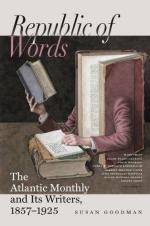Holbein is known chiefly by his portraits. He painted some historical and sacred pictures; but though they all bear witness to his genius, it can hardly be denied that they also show that that genius was not suited to such works. Holbein had an objective perception;—that is, his mind received impressions entirely uninfluenced by its own character or condition; and his pictures, therefore, seem like literal transcripts of what was before his eyes. He nowhere shows that he had an idea of abstract beauty, or the power of generalizing from individuals, or that he was at all discontented with the subjects which he painted; so that his works leave an impression of absolute faithfulness. But to suppose, therefore, that his portraits have merely the merit of reproducing the external facts of Nature, like photographs, would do him wrong; for he was faithful to expression as well as form, and has perpetuated upon his canvas the voluptuous sweetness of Anne Boleyn, the courtliness and manly grace of Wyatt, and the severity, the energy, and the penetrating judgment of Sir Thomas More. His portrait of the last is one of the greatest portraits ever painted. Some competent critics consider it the greatest. It is so real, so human, that we might be well content, if one in twenty of the actual men we meet were half as real and human; and it expresses, with equal strength and subtilty, the large and noble nature of the man. Holbein was a great colorist, and imitated all the rich and tender hues of Nature, in their delicate and almost imperceptible gradations, with a minute truthfulness which is quite marvellous.
This being the character of his mind, it would hardly be supposed that he could produce such a work as the great Dance of Death, which has caused all others to be forgotten, except by antiquarians. For this Dance is the most remarkable embodiment in Art of that fantastic and grotesque idealism which has found its best expression in the works of German poets and painters; and the preeminence of Holbein’s over all the other representations of the same subject consists in this,—that, while they are but a dull and formal succession of mere costumed figures seized by a corpse and shrinking away from its touch, Holbein’s groups are instinct with life, character, and emotion. In particular is this true of the figure of Death, although it is a mere skeleton,—the face without a muscle, and for the eye but a rayless cavern. Death is not one whom “a limner would love to paint or a lady to look upon”; but Holbein has given a strange and fascinating interest to the figure, which in all other hands is merely repulsive. The grim monarch sat to a painter who not only added to the truthfulness of his portrait the charm of poetic feeling, but the magic touch of whose pencil made his dry bones live.




